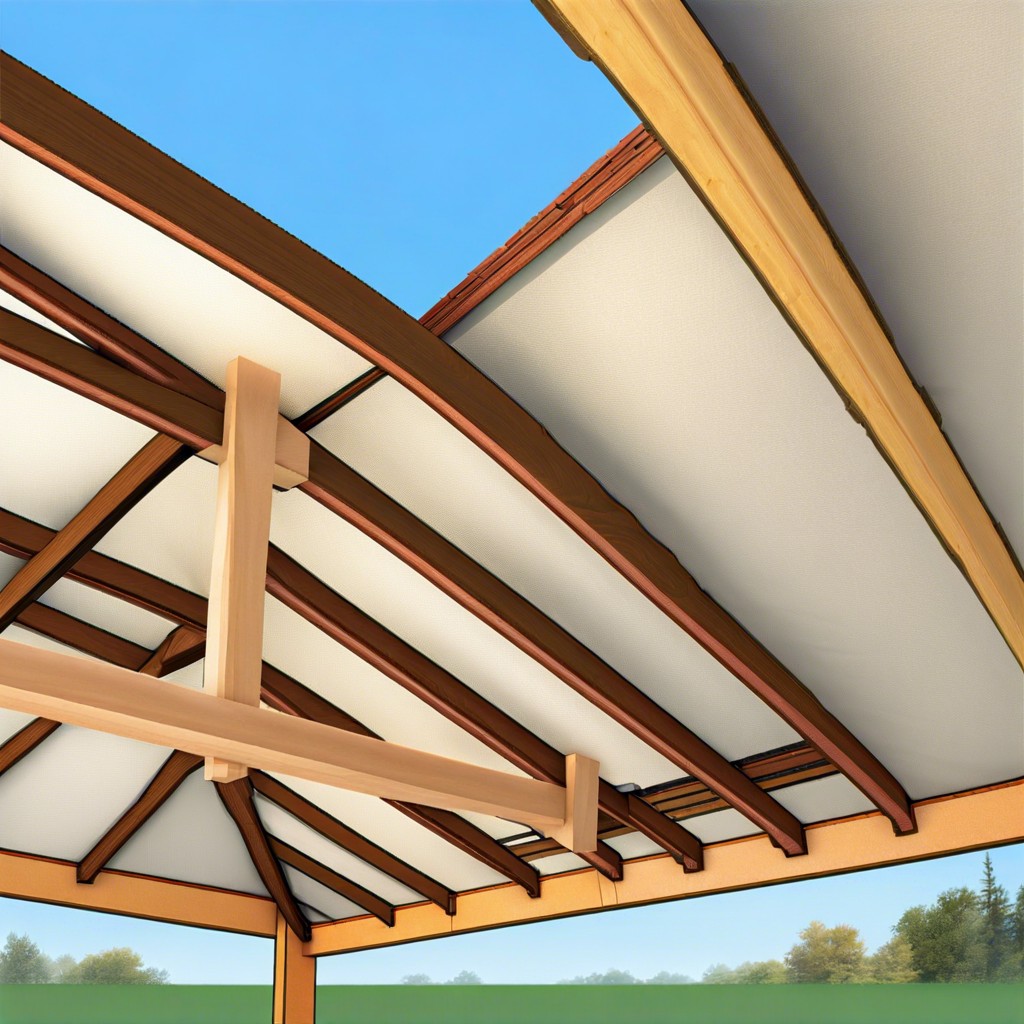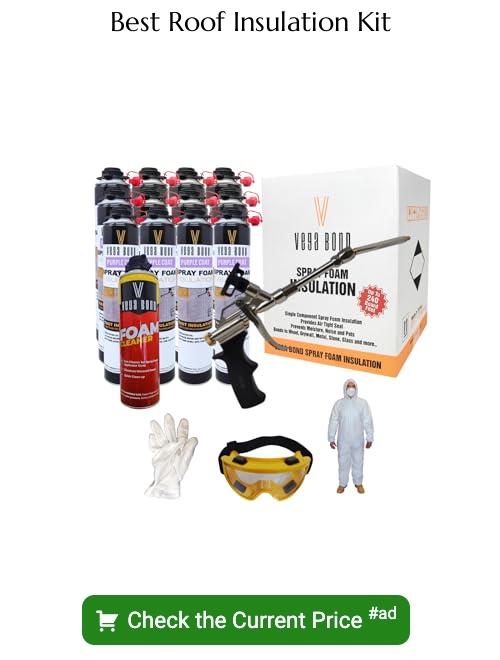Last updated on
Learn how to effectively insulate your roof to enhance energy efficiency and comfort in your home.
Key takeaways:
- Understanding R-Values for Roof Insulation
- Best Types of Insulation for Roofs
- What To Look For In Roof Insulation
- Choosing Roof Insulation for Your Home
- Do-It-Yourself Insulation Techniques
Understanding R-Values for Roof Insulation

The concept of R-values is central to selecting the right insulation for your roof. R-value measures an insulation material’s resistance to heat flow, with higher numbers indicating greater insulating effectiveness. For roof applications, it’s essential to choose insulation with an R-value appropriate for your climate zone. For instance, in colder regions, the recommended R-value for attic insulation is typically R-49 or higher, whereas in milder climates, R-38 may suffice.
Different materials have varying R-values per inch of thickness. For example, fiberglass batts might have an R-value between R-3 to R-4 per inch, while rigid foam boards can have an R-value up to R-6.5 per inch, and spray foam insulation can range from R-3.5 to R-6.5 per inch, depending on the type.
Keep in mind that insulation’s effectiveness may diminish if not properly installed. Compressing the material or leaving gaps can significantly reduce the overall R-value, leading to decreased energy efficiency. For optimal performance, ensure that the roof insulation is installed according to the manufacturer’s guidelines and that the entirety of the roof area is covered uniformly.
Best Types of Insulation for Roofs
Spray Foam Insulation stands out for its high R-value per inch, providing superior thermal resistance and air-sealing capabilities. It is applicable in two forms: open-cell and closed-cell, the latter being ideal for areas prone to moisture due to its water resistance.
Fiberglass Batts are among the most commonly used insulating materials for their ease of installation and cost-effectiveness. They fit snugly between rafters and joists but must be carefully installed to avoid gaps and compression, which diminish insulation efficiency.
Rigid Foam Insulation offers versatility and high insulating value for its thickness. Panels can be cut to size and used above or below the roof sheathing. While providing continuous coverage, the installation requires attention to detail to avoid thermal bridging at the seams.
Radiant Barriers are reflective insulators, primarily beneficial in hotter climates. They reflect radiant heat and help keep attics cooler, reducing cooling demands. However, they do not provide significant R-value and should be used in conjunction with other insulating materials.
Mineral Wool, similar to fiberglass, comes in batts or loose-fill variations. It is fire-resistant and excellent for soundproofing. While it has a higher price point, it provides both insulation and an added level of safety in case of fire.
Cellulose Insulation, a sustainable option often made from recycled paper, can be blown into the attic space. This ensures a complete fill, conforming to irregular spaces and obstructions and providing a solid barrier against heat transfer.
What To Look For In Roof Insulation
When selecting insulation for your roof, several considerations are vital for optimal performance and energy efficiency:
- Climate Suitability: ** Choose material with an R-value appropriate for your region’s weather conditions.
- Material Longevity: ** Opt for durable insulation that maintains its insulating properties over time without significant degradation.
- Moisture Resistance: ** Ensure the insulation is moisture-resistant to prevent mold growth and structural damage.
- Ease of Installation: ** Consider the installation process. Some materials may require professional assistance, while others are more manageable for do-it-yourself projects.
- Environmental Impact: ** Look for eco-friendly options that minimize environmental footprint, such as recycled content or low-emission materials.
- Cost-Effectiveness: ** Weigh the upfront costs against long-term savings on energy bills to determine the most economical choice.
- Compatibility: ** Verify that the insulation material is compatible with your existing roof structure and will not cause chemical reactions that can damage your roof.
Choosing Roof Insulation for Your Home
Selecting the right insulation for your roof requires careful consideration of several factors. Climate is paramount; households in colder regions will need insulation with a higher R-value to prevent heat loss. Conversely, in warmer climates, preventing heat gain is the goal, demanding insulation that can effectively block incoming heat.
Material suitability is another critical aspect to assess. For instance, fiberglass batts are common and affordable, but may not perform well in damp conditions unlike rigid foam or spray foam which offer resistance to moisture and provide excellent air sealing.
The architecture of your home also dictates insulation choice. A house with a vaulted ceiling might benefit more from rigid foam boards rather than loose-fill insulation, which might settle unevenly over time. Similarly, homes with limited attic space may require a thinner, higher R-value insulation to maximize efficiency without compromising space.
Energy efficiency targets set by local building codes or personal environmental concerns can influence the decision as well. Products like cellulose, which is often made from recycled paper, provide an eco-friendly insulation option while helping to meet stringent energy codes.
Lastly, budget constraints should align with performance expectations. It’s crucial to invest in insulation that offers durability and energy savings over time, balancing initial costs with long-term benefits. High-quality insulation may have greater upfront costs, but the reduction in energy bills can offset this over the lifespan of the roof.
Do-It-Yourself Insulation Techniques
Insulating a roof on your own can be a cost-effective way to improve your home’s energy efficiency if you have the right tools and safety measures in place. Before starting, ensure you have protective gear including gloves, a dust mask, and safety glasses.
Begin by measuring your attic space to determine how much insulation you’ll need. Purchasing rolls or batts of insulation that fit between the rafters is a convenient option. Start at the farthest point from the attic access and work your way back, making sure to fit the insulation snugly between rafters and leaving no gaps.
In areas where it’s difficult to place batts or rolls, loose-fill insulation can be used. This type requires a blowing machine for proper installation, which can often be rented from home improvement stores.
When insulating, pay special attention to ventilation. Do not block soffit vents with insulation, as proper airflow is crucial to prevent moisture buildup and ensure the longevity of your roof.
Sealing gaps before adding insulation is also important. Use caulk or expanding foam to seal any areas where air leaks might occur, such as around chimney stacks or vent pipes.
Lastly, remember that different areas of the country may require different R-values. Consult local building codes to ensure you’re meeting the recommended standards for your region.
Remember, while DIY roof insulation is an achievable project, always assess the scope of the job and consider professional help if the project becomes more complex than anticipated.





